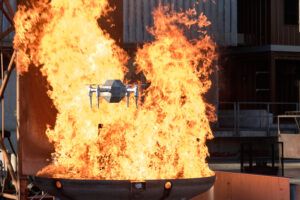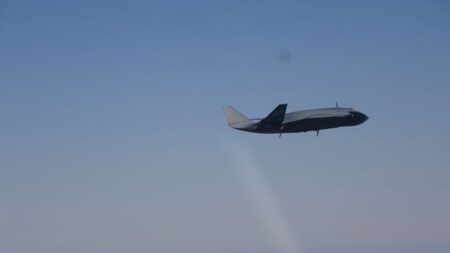David Häusermann, research engineer at Switzerland’s Empa, on how he has developed a drone able to fly in extreme temperature environments.
The FireDrone project is a collaboration between Empa, which is Switzerland’s Laboratories of Material Science and Technology and Imperial College London.
The idea for the project was born in 2017 when, after the Grenfell Tower fire in London Professor Mirko Kovac, head of the Laboratory of Sustainability Robotics at EMPA and director of the Aerial Robotics Laboratory at Imperial College London was asked if he had a drone that could fly inside to help the firefighting effort. There wasn’t one.
By 2019 the FireDrone project had been set up and I was working on it as part of my Mechanical Engineering Masters at ETH Zurich.
Earlier this year we completed testing a prototype of the drone and published our paper “FireDrone: Multi-Environment Thermally Agnostic Aerial Robot”. The drone is made of a new thermal aerogel insulation material and features an internal cooling system so it can withstand temperatures up to 200°C (392°F) for a maximum of ten minutes.
Eventually, we hope to develop a product that firefighters can use to assess fires, dangerous areas and save more lives, while reducing the risk to their own lives.
The FireDrone is a unique design – initially we assessed whether we could wrap a commercial drone in the aerogel but quickly decided to start from scratch. We manufactured a protective shell for its temperature-sensitive components: the regular and infrared cameras, temperature sensors, video transmitters, flight controllers, batteries, and radio receivers.
The shell is made of glass fibre-reinforced polyimide aerogel and coated with aluminum to reflect the thermal radiation. The rotors are made of carbon fibre also coated with aluminum.
One of the most challenging aspects of the project was the simultaneous co-development of the FireDrone and the polyimide aerogel insulation material in collaboration with the Superinsulation Materials group at Empa.
The mechanical and thermal properties of the aerogel affect the design of the drone. For example, we added glass fibers to prevent the shrinkage of the polyimide aerogel in high temperatures and an aluminum coating to reflect thermal radiation and enhance the insulating performance.
We also did a lot of materials characterization using coupons. This data was then used to iterate the design using simulation loops to model the thermal insulation performance.
We then built qualification models of the structure and insulation before combining them into
the prototype. We also used climatic chambers at Empa before moving to flight testing with fire.
The initial flight tests were performed at Empa’s Flight Arena and subsequent flights near real fire sources at a firefighting training center in Zurich. One of the key learnings was the flight performance when approaching the fire. We anticipated the effect of reduced lift in the turbulent hot air, but further research is needed to investigate and model the turbulences so it can be mitigated in terms of power and rotor control.
We have worked closely with firefighters since defining the scope of the project. It is vital to keep their needs and requirements in mind, so we can develop a device that is useful and doesn’t slow them down.
Now we are working on version two of the FireDrone, which will be smaller, lighter and perform better, with plans to achieve a level of autonomy and heat proofing beyond 200°C.






